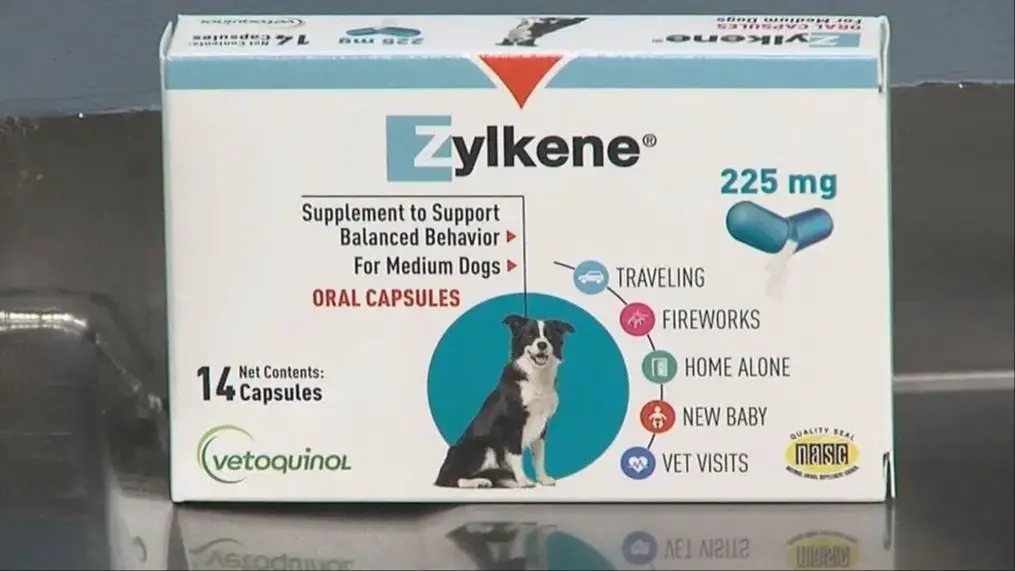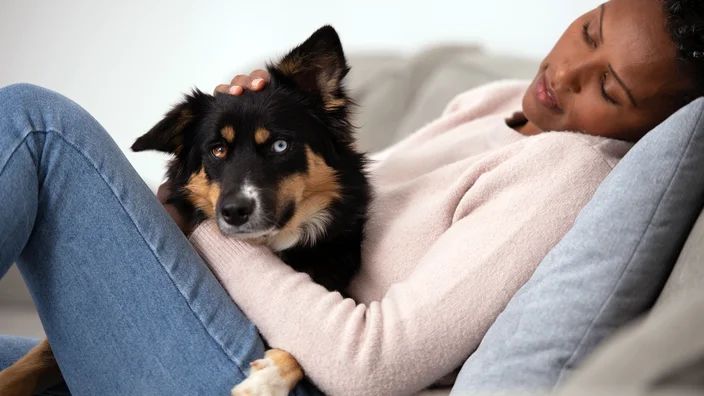Introduction
Xanax is a brand name for the drug alprazolam, which belongs to a class of medications called benzodiazepines. It works by enhancing the effects of gamma-aminobutyric acid (GABA) in the brain to promote calmness and relaxation. In veterinary medicine, Xanax is prescribed for dogs to treat anxiety, fear, and phobias related to noise, travel, vet visits, grooming, and more. It can also be used short-term alongside behavior modification training to reduce separation anxiety in dogs. Xanax has a rapid onset of action in dogs, typically taking effect within 1-2 hours. It is considered a safe medication when used responsibly under veterinary supervision. However, the sedative effects mean it should be used cautiously in elderly dogs or those with liver or kidney problems.
Sources:
- https://vcahospitals.com/know-your-pet/alprazolam
- https://www.goodrx.com/pet-health/dog/xanax-for-dogs
When is Xanax Prescribed for Dogs?
Xanax (alprazolam) is most commonly prescribed for dogs to treat anxiety and panic disorders, especially those related to noise phobias like fear of thunderstorms or fireworks (Alprazolam – VCA Animal Hospitals). Alprazolam, the generic name for Xanax, provides temporary relief of anxiety symptoms by enhancing the effect of the neurotransmitter GABA in the brain. Vets may prescribe Xanax on an as-needed basis for situational anxieties or on a regular schedule for more generalized anxiety.

Some common anxiety and panic disorders in dogs that Xanax may be prescribed for include:
- Separation anxiety
- Phobias like fear of loud noises, car rides, or veterinary visits
- OCD behaviors like excessive licking
- Generalized anxiety shown through restlessness, panting, shaking, etc.
Xanax should be used cautiously in geriatric dogs or those with liver disease, kidney disease, or glaucoma (Alprazolam (Xanax) – Veterinary Partner – VIN). Vets will weigh the benefits and risks before prescribing.
Xanax Dosage Forms and Strengths
Xanax comes in both tablet and liquid forms for dogs. The tablets come in 0.25 mg, 0.5 mg, 1 mg, and 2 mg strengths. The oral solution comes in a strength of 2 mg/mL (Ref 1).

The tablet dosage forms allow for more precise dosing based on the dog’s weight. The liquid can be useful for dogs that won’t take a tablet but provides less dosing flexibility. Both forms are readily absorbed after oral administration with onset of effects within 1 hour and duration of action of 6-8 hours (Ref 2).
Xanax Dosing Guidelines
Several factors influence the dosage of Xanax that is prescribed for dogs, with the dog’s weight being the most important. Xanax is typically dosed at 0.01 to 0.05 mg per pound (0.02 to 0.1 mg/kg) given two to three times daily. For example, a 50 lb dog would get a dosage of 0.5 to 2.5 mg two to three times per day. Generally, smaller dogs will be prescribed lower doses of Xanax.
The dog’s age, health status, and response to treatment are also taken into consideration when determining the appropriate dose. Elderly dogs or those with liver or kidney problems may require lower doses. The veterinarian will start with a low dose and then adjust it based on how the dog responds and whether the desired anti-anxiety effects are achieved.
Per “Xanax Dosage for Dogs” on petplace.com, “The dose may be gradually increased until the desired effect is achieved without causing undesirable side effects.” Thus, finding the optimal dose often involves some trial and error while monitoring the dog’s reaction.
Starting Dose
The starting dose of Xanax for dogs is based on the dog’s weight. Xanax is available in tablet form in strengths of 0.25mg, 0.5mg, 1mg, and 2mg. Typical starting doses range from 0.02 mg/kg to 0.04 mg/kg. So for a 10 lb dog, the starting dose would be 0.2 mg to 0.4 mg. For a 50 lb dog, the starting dose would be 1 mg to 2 mg.
According to Cranston Veterinary Clinic, the starting dose for most dogs is in the range of 0.02 to 0.04 mg/kg. For small dogs under 20 lbs, the typical starting dose is 0.25 mg once or twice daily. For medium dogs 20-50 lbs, the starting dose is 0.5 mg once or twice daily. For large dogs over 50 lbs, the typical starting dose is 1 mg once or twice daily (https://cranstonvet.com/wp-content/uploads/2021/12/General-Guidelines-for-using-Alprazolam.pdf)
It’s important to follow your veterinarian’s specific dosing instructions and start with the lowest effective dose for your dog. The starting dose will depend on your dog’s individual weight and condition being treated.
Maintenance Dose
The recommended maintenance dose of Xanax for dogs is 0.01-0.05 mg per pound every 12-24 hours (source). This maintenance dose range helps keep anxiety and stress under control in dogs once the desired therapeutic effect has been achieved with the starting dose. The actual maintenance dose for each dog will depend on factors like body weight, response to treatment, and the discretion of the veterinarian. Maintenance doses should be given at the lowest effective dose and frequency to avoid oversedation or other side effects. Most dogs do well on the lowest end of the dose range, around 0.01-0.02 mg per pound every 12-24 hours. For large breed dogs, it’s typical to stay on the lower half of the maintenance dose range. Smaller dogs may need slightly higher maintenance doses per pound but the total dose should not exceed 1 mg per day. The maintenance dose can be adjusted up or down as needed, under veterinary supervision.

Maximum Dose
The maximum dose of Xanax for dogs is 0.5-2 mg per pound (1-4 mg/kg) given every 12-24 hours [1]. Higher doses may increase the risk of toxicity and adverse effects. Xanax toxicity in dogs can occur when doses exceed 2 mg per pound (4 mg/kg).
Signs of Xanax toxicity in dogs include [1]:
- Sedation
- Weakness
- Lack of coordination
- Collapse
- Low heart rate
- Low blood pressure
- Coma
- Seizures
Xanax overdose can be life-threatening in dogs. Seek immediate veterinary attention if you suspect your dog has received an overdose.
Administration Instructions
Xanax should be given with food to minimize stomach upset according to the Cranston Veterinary Clinic [1]. It is typically recommended to administer Xanax twice daily, once in the morning and once at night. Giving the medication at the same times each day helps maintain a steady level in your dog’s system.
When starting Xanax, it is advisable to begin with a low dose and increase gradually as needed. Similarly, when discontinuing the medication, tapering the dose over a period of weeks is preferable to abruptly stopping in order to avoid withdrawal symptoms. Work closely with your veterinarian on the proper tapering schedule for your dog if Xanax needs to be discontinued.
Monitoring During Use
It’s important to monitor your dog closely while they are taking Xanax to watch for signs of toxicity or adverse reactions. According to one source, signs of Xanax toxicity in dogs can include
“lethargy, weakness, loss of coordination, collapse, coma, and respiratory depression or arrest” (see Source).
Other potential side effects to look out for include increased thirst, vomiting, diarrhea, restlessness, disorientation, low heart rate, low blood pressure, and hypothermia. Dogs may also experience paradoxical reactions like excitation or aggression. Elderly dogs and those with liver or kidney disease may be more prone to adverse effects.
If you notice any concerning signs in your dog after giving them Xanax, call your veterinarian right away. It’s important not to combine Xanax with other substances that cause central nervous system depression, as this can increase the risk of toxicity.
Overdose Treatment
If a dog shows signs of a Xanax overdose such as extreme sedation or unresponsiveness, immediate veterinary care should be sought. There are a few steps that can be taken at home initially to try and reduce absorption of the medication.
First, if the overdose was recent, inducing vomiting may help clear some of the ingested Xanax from the stomach before it can be absorbed. This can be done by administering 3% hydrogen peroxide orally based on the dog’s weight. Give 1 teaspoon per 5 pounds of body weight, up to 3 tablespoons maximum. Repeat one time if vomiting doesn’t occur in 15 minutes.

Supportive care is also very important when managing an overdose. The dog should be kept warm, and blood pressure, heart rate, temperature, and respiration should be monitored closely. Stimulants like caffeine may be given to counter the sedative effects. Intravenous (IV) fluids can help maintain blood pressure and prevent dehydration.
The earlier an overdose is caught and treated, the better the chances of recovery with appropriate supportive care. Always consult a veterinarian immediately in any suspected overdose situation.
